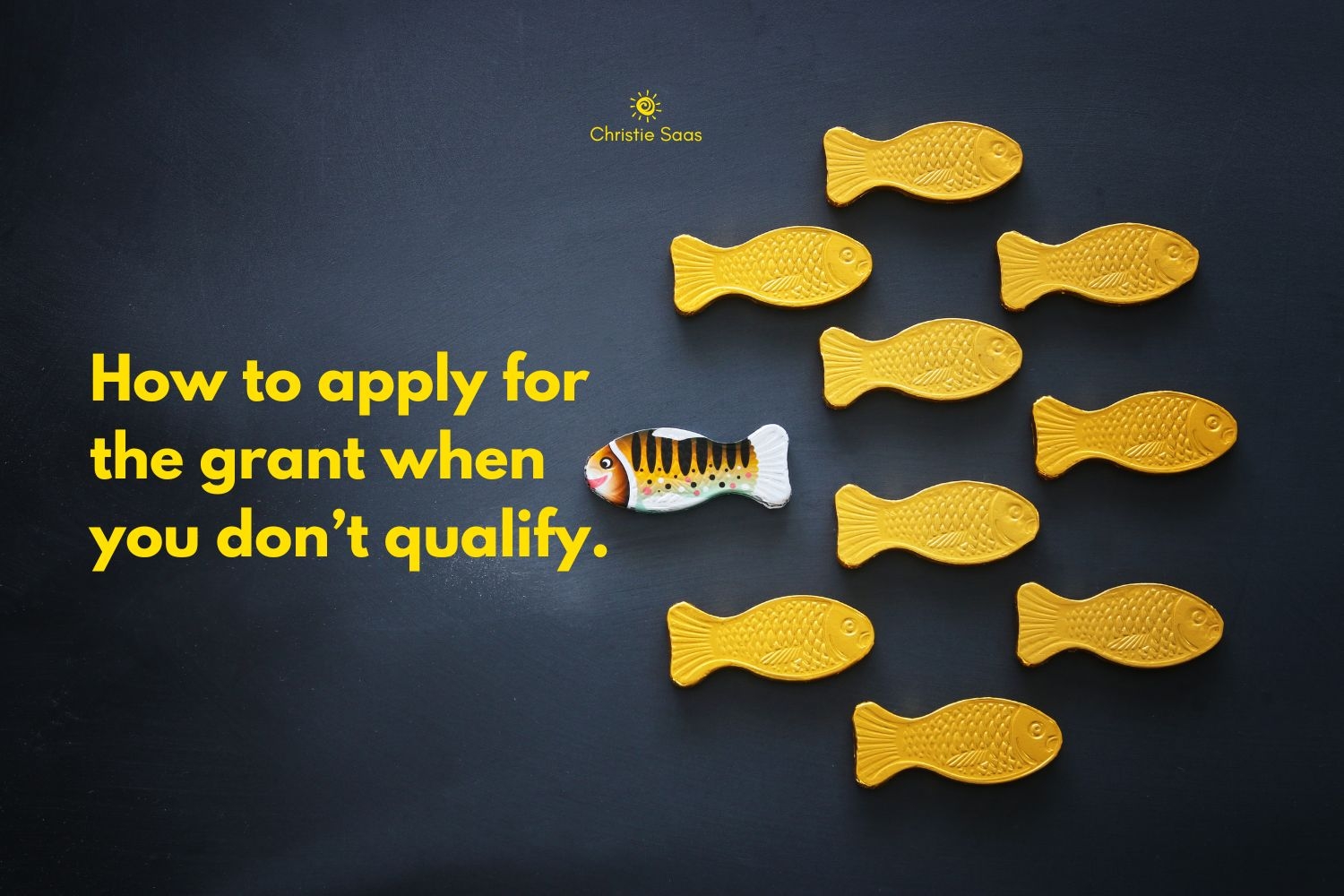How to Apply for the Grant When You Don’t Qualify

Funders are in the business of granting money and they welcome applications from groups or organizations that help to meet their mandate. Funders also have a handful of requirements that an applicant must meet to qualify to apply for funding. Sometimes those requirements state an organization must have been in operations for a certain number of years before applying.
Too new to have the funds and too new to apply for funds.
The challenge a new non-profit faces is that it desperately needs the funding but doesn’t have a enough experience to demonstrate it knows how to handle the funding. The situation feels impossible because the new group doesn’t have funds and can’t raise funds. To overcome this catch-22, a little creative thinking is needed.
Find a grant endorser.
Non-profits that don’t meet the requirements to apply for funding but do have a strong idea they know is a good match for the funder, might be able to apply through a grant endorser.
A grant endorser is a more established non-profit that meets all the requirements to make an application for funding and will formally agree to make the funding application on behalf of the not-yet-qualified group. It is a three-way partnership between the new non-profit, the more established non-profit, and the funder.
The first step to create the partnership is to talk to the funder to learn if a grant endorser relationship is allowed, and what rules must be followed. If the funder agrees, the new non-profit and the more established non-profit will work out a written agreement outlining the details about how the application will be made, how the funds will be handled, and how the follow-up will be reported.
In most partnerships, a grant endorser does very little work. The new non-profit will write the application and submit all the required information, often under the name of the grant endorser. The established non-profit will receive the funds and pass them along to the new non-profit for the program. The new non-profit completes the program, following all the funder’s rules, and will submit the follow-up, also often under the name of the grant endorser.
The nuances of whose name is on the application, who is ultimately responsible for the funding, and who writes the follow-up will depend on the rules of the funder and the agreement between the new non-profit and the grant endorser. Agreements can be as simple or as complex as either non-profit feel is warranted. There is no grant endorser template.
Empowering other groups to succeed.
Grant endorsing is ultimately about helping another non-profit succeed. That’s the gift of working in the non-profit sector. Even if groups might compete for funding dollars, non-profit organizations are almost always willing to help another group get started.
The grant endorser relationship benefits both non-profits. The new group builds credibility by raising funds and successfully running a program. The grant endorser non-profit demonstrates a more advanced impact by partnering with a new group. The funder also succeeds by supporting new programs and groups.
Build a solid foundation by talking to the funder, first.
If your non-profit is new and doesn’t quite meet the qualifications to apply for funding, BUT you have an amazing program you want to get started, start by talking with the funder’s program officer. Funders usually have dedicated employees who manage all aspects of funding programs. They are there to answer questions and can help guide new applicants through the process. They might even be able to suggest the right grant endorser.
Questions?
What questions do you have about grant endorsements? Maybe I didn’t provide enough detail, or you are looking for different information. If you have questions, I want to know! Please use the form on the right side of the page to let me know.
-Christie
…
Hi, I'm Christie. I help executive directors develop the systems and processes needed to run a non-profit.
I learned early in my career that there is no non-profit school. The day-to-day operations of running a non-profit are not taught. Anyone can become a non-profit executive director by simply being knowledgeable in their field. That doesn’t help when it’s time to balance the budget, write a work plan, or conduct an employee evaluation.
I want your path to be easier. No more wasted time hunting for shortcuts or solutions.
I created ChristieSaas.com so non-profit leaders never need to wonder how to do the job. I have been the executive director of small team, small budget, non-profits for 20+ years. My experience isn’t theory. It is based on real operational practical solutions.
I love my work and I want to help you love yours too.
If you’re a brand-new non-profit leader, or a little more seasoned, someone who’s looking to make a meaningful contribution and still have time for a full life away from the job, you’re in the right place.
© Christie Saas 2023 All Rights Reserved
…
Want to learn more?
Start with one of my free resources.


